Crossed Swords (1954 film)
6.4 /10 1 Votes
Language English | 6.4/10 IMDb Genre Adventure Duration Country ItalyUSA | |||||||||||||||||||||||||||||||||
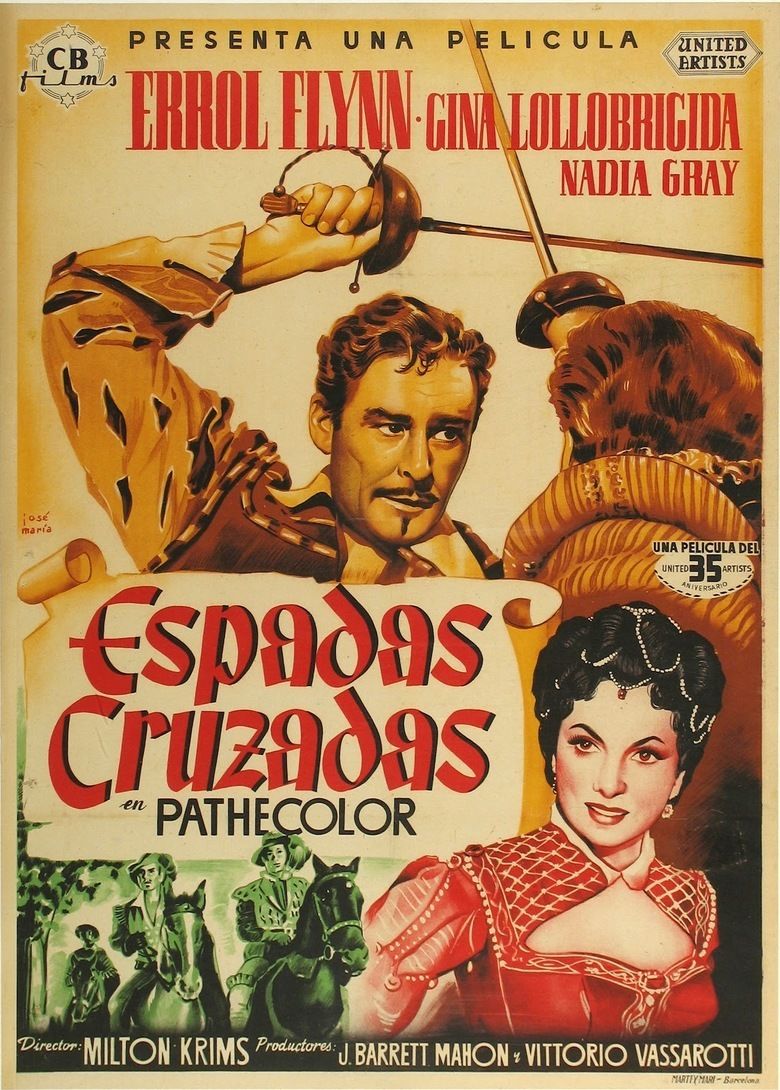 | ||||||||||||||||||||||||||||||||||
Director Milton KrimsVittorio Vassarotti (Italian edition)assistantPiero Mussetta Release date 1954 Directors Milton Krims, Vittorio Vassarotti Music director Alessandro Cicognini, Gino Marinuzzi Jr. Cast Similar movies Errol Flynn appears in Crossed Swords and Adventures of Don Juan | ||||||||||||||||||||||||||||||||||
Crossed Swords is a 1954 Italian made swashbuckler film starring Errol Flynn and Gina Lollobrigida.
Contents
- Errol flynn in crossed swords
- Plot
- Cast
- Background
- Shoot
- Reception
- Errol flynn in crossed swords tavern fight
- References
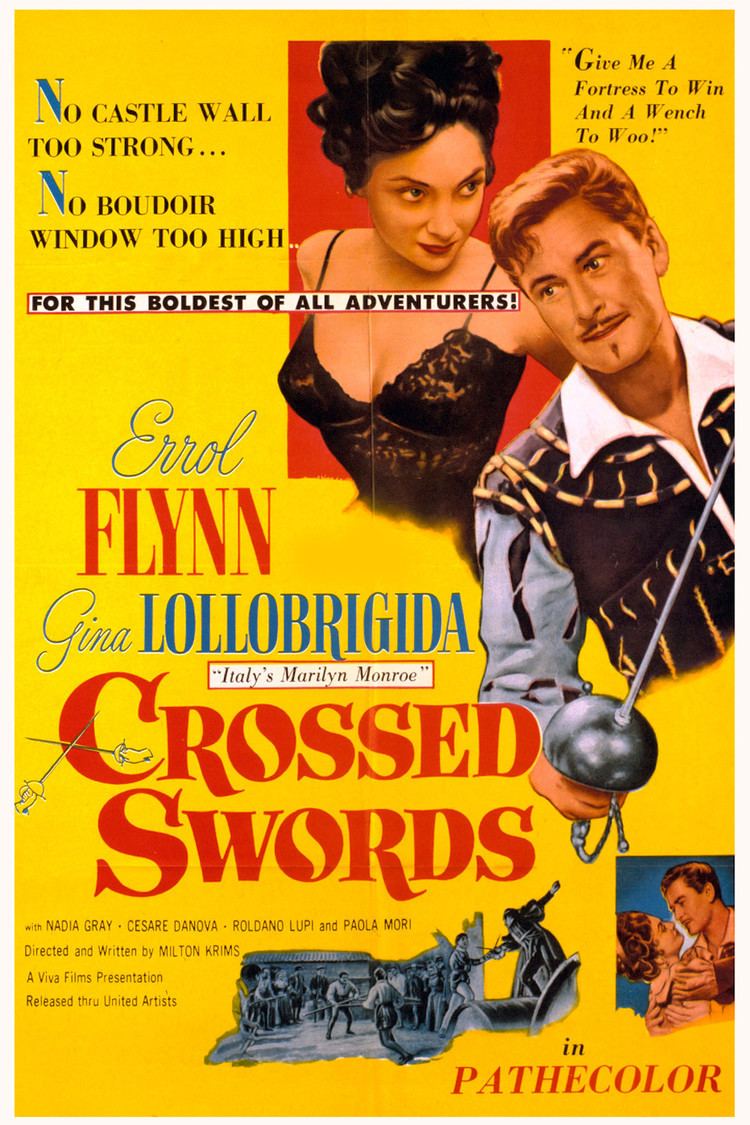
It was also known as Il Maestro di Don Giovanni ("The Teacher of Don Juan") and The Golden Blade.
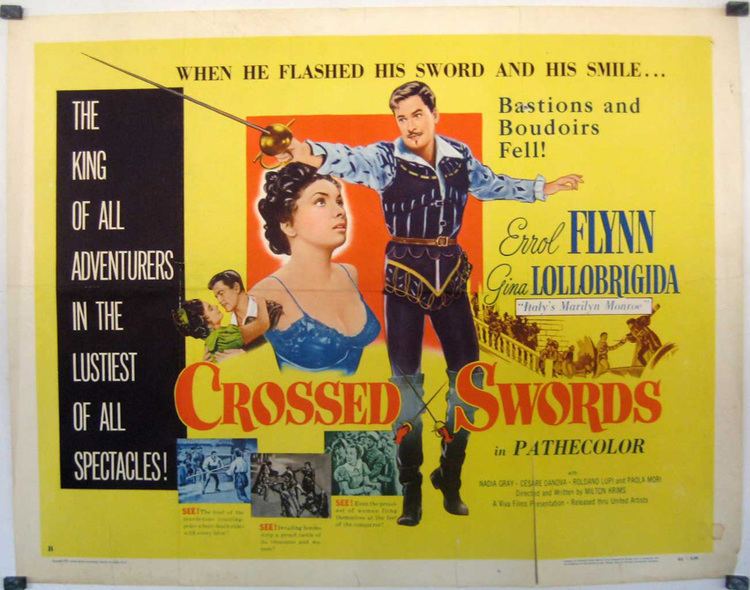
Errol flynn in crossed swords
Plot
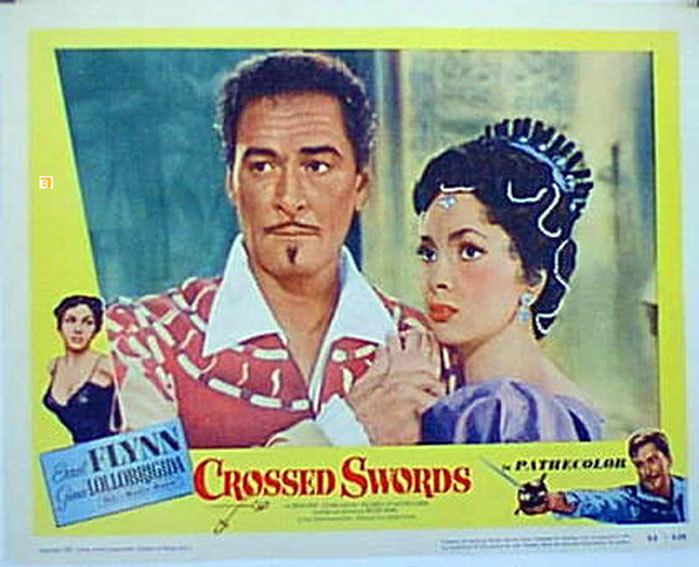
The film is set in medieval Italy, in the duchess of Sidona. Raniero and Renzo are two friends who have been travelling together for two years, having adventures, fighting duels and womanizing. Raniero is the son of the Duke of Sidona, and the elder Renzo his Don Juan-type mentor.
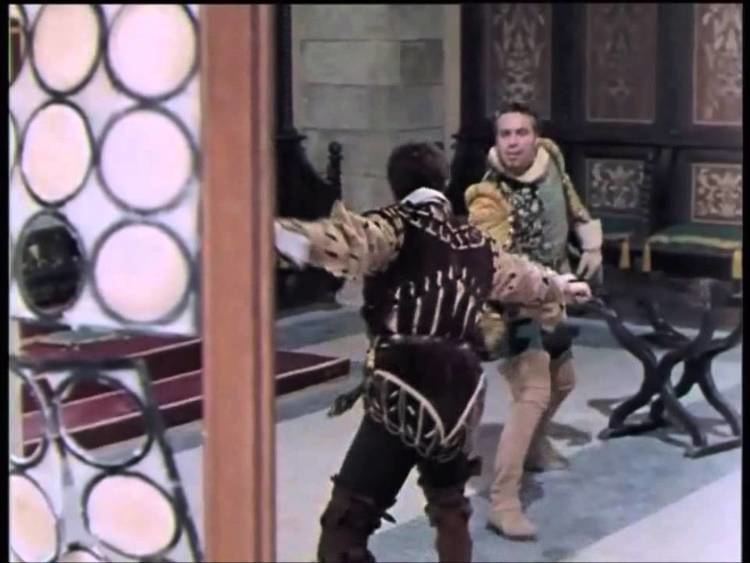
On their way back to Sidona after a two year absence, Renzo and Raniero encounter Fulvia, a former lover of Renzo. She attacks him then invites him to her estate.
Fulvia's rich husband Gennarelli is at a meeting at Sidona. Pavoncello, the Duke's counselor, is suggesting a new law where all men under twenty must marry and produce children or face imprisonment. (The aim is to ensure future manpower to defend the duchy). The Duke is unsure whether the law is what the people want and refuses to sign it until he consults them.
Gennarelli returns to his estate and surprises Renzo and his wife. The two men fight a duel which Renzo easily wins. Renzo and Raniero head to the castle where the Duke welcomes them. The Duke's daughter, Francesca, regards Renzo as a bad influence on her brother but is attracted to him.
Fulvia arranges a joust with Indian sticks between Renzo and Pavoncello, who wants to marry Francesca. Both men are wounded and the duke stops the contest.
Gennarelli approaches Pavoncello, suggesting he use the proposed law to drive Renzo out of Sidona. Gennarelli and Pavoncello join forces to persuade the Duke to sign the law.
Renzo flees Sidona with Raniero. Pavoncello hires an assassin, Lenzi, to kill Renzo and Raniero. It is revealed Pavoncello wants to take over Sidona and surrounding areas as well; he arranges Lenzi to hire two hunderd mercenaries.
Renzo and Raniero are eating in a tavern when attacked by Lenzi's men but they defeat them. They return to the castle and overhear Fulvia talking to Gennarelli about the latter's plan with Pavoncello.
Renzo and Raniero are captured. Lenzi's mercenary army enters Sidona, and imprisons the Duke and Francesca.
Fulvia helps Renzo and Raniero to escape. They manage to rescue the Duke and Francesca and lead an uprising. Francesca uses the women of Sidona to seduce Lenzi's mercenaries. This enables Renzo to kill Lenzi, and for Raniero to raise the Duke's loyal supporters in rebellion. Renzo kills Pavoncello in a sword duel.
Renzo agrees to marry Francesca.
Cast
Background
Milton Krims announced he was to write and produce a film called The Ninth Man in 1950 based on a 1920 novel by Mary Heaton Vorse set in Italy in the fifteenth century. James Woolf of Romulus Films was originally announced as producer.
In 1952 it was announced Krims would make The Ninth Man with Errol Flynn in the lead for Constellation Films with J. Barrett Mahon to act on Flynn's behalf behind the scenes.
Shoot
Flynn self-produced the film (in association with Barry Mahon) in an attempt to emulate the success of The Adventures of Don Juan (1948), which had sold well in Europe on its release by Warner Bros.. John Bash helped Flynn finance the film.
Filming took place in Italy at Cinecitta Studios in Rome with exteriors shot in the village of Lauro.
It was the first role for Gina Lollobrigida beyond the Italian market, and her fee was 30 million lira.
The movie was shot in Pathecolor, a new color process developed by Pathe Industries.
Reception
The Chicago Daily Tribune said the film "offers very little interest" apart from the photography.
Box office reception was disappointing - Flynn later claimed the film was sold "very badly". Dorothy Kilgallen later wrote that Flynn's share from the film "amounts to quite a pile of bills" but he never received the money because "they're all Washington-bound to defray his staggering tax debt."
The experience prompted Flynn to try another production in Italy, the disastrous William Tell. Shortly after the shoot Flynn's wife gave birth to a baby girl.
During a screening of the film in New York, a woman in the audience killed herself.
Errol flynn in crossed swords tavern fight
References
Crossed Swords (1954 film) WikipediaCrossed Swords (1954 film) IMDbCrossed Swords (1954 film) themoviedb.org
